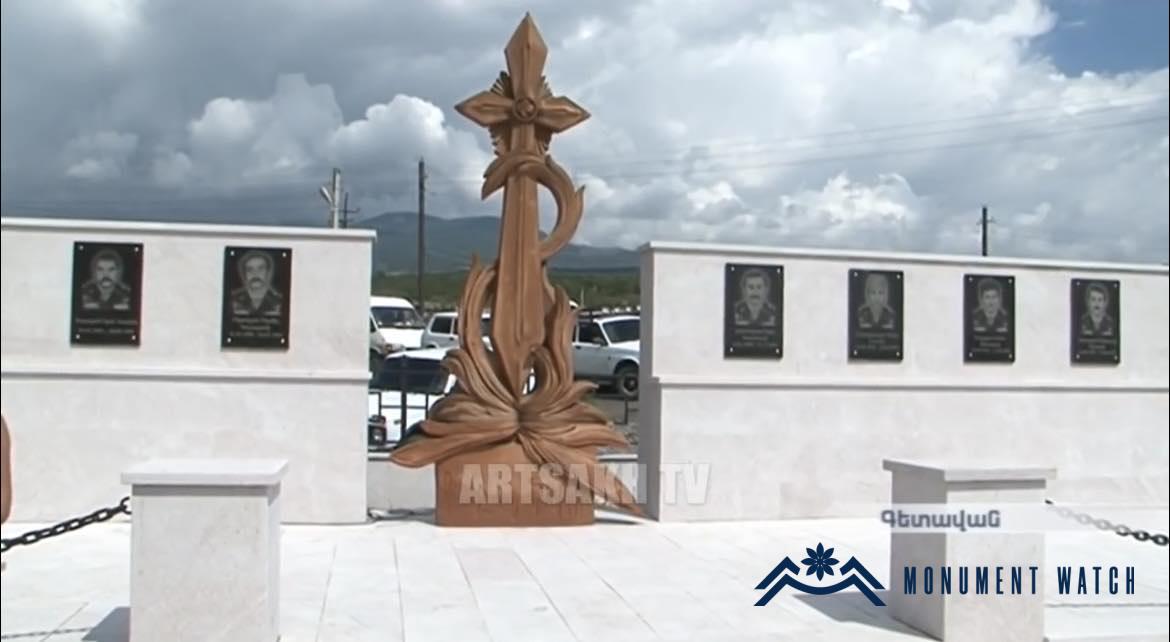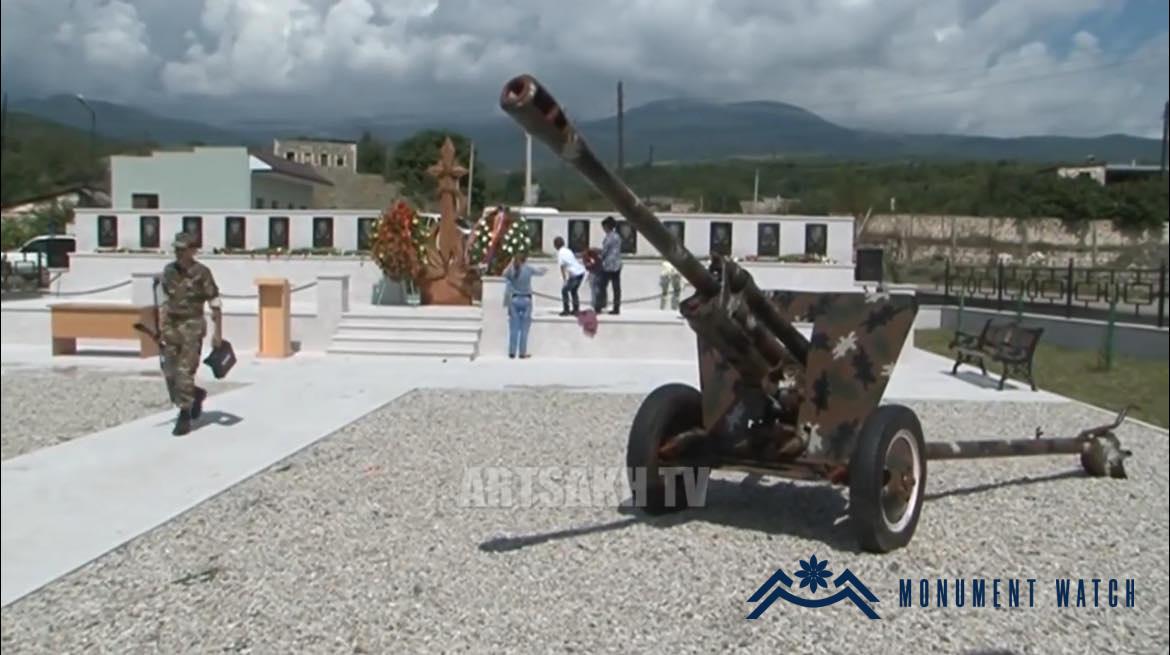The Getavan monument in the target of Azerbaijani vandalism
In the village of Getavan in the Martakert region of occupied Artsakh, the Azerbaijani side has vandalized the memorial plaques affixed to the wall of the monument built in memory of the Getavan freedom fighters who perished while defending the village (https://www.youtube.com/watch?v=8u7oWJz2NfY). The aforementioned act of vandalism is evident in the concluding segment of the video.
The Getavan monument was officially inaugurated in the year 2016. (https://www.youtube.com/watch?v=bxOJc1O8Ih4). In the center of the monument was a khachkar crafted by the sculptor Varazdat Hambardzumyan, which was also destroyed. It's worth noting that this isn't the only work of the master in Artsakh. Varazdat Hambardzumyan initiated the placement of "Sword-crosses" or "border crosses" in the protected zones of Artsakh after the War of Liberation, symbolizing victory and delineating borders. Subsequently, they became prevalent both in Artsakh and Armenia.
In the "Sword-cross" composition, a distinctive feature is the depiction of a four-edged sword, rather than a conventional one with a hilt, guard, and blade. This portrayal suggests an emphasis on its strength and power in all directions. According to the master, "the cross transforms into a sword when the homeland is in peril."
Our response
The International Court of Justice has affirmed that the laws governing the occupied territories, including measures for safeguarding cultural heritage, have attained the status of customary international law (under jurisprudence). This means that they serve as a universally applicable and obligatory standard, binding upon all states https://casebook.icrc.org/case-study/icjisrael-separation-wallsecurity-fence-occupied-palestinian-territory.
It is crucial to highlight that targeting khachkars constitutes a specifically prohibited act and is regarded as a grave offense against all of humanity. This is because "The Art of Armenian Khachkars: The Symbolism and Craftsmanship of Khachkars" has been included in UNESCO's List of Intangible Cultural Heritage since 2010 https://ich.unesco.org/en/RL/armenian-cross-stones-art-symbolism-and-craftsmanship-of-khachkars-00434 . As such, it is recognized as a universal cultural asset.
The culture surrounding khachkars also benefits from additional protection during and after conflicts. Specifically, according to the 1954 Hague Convention on the Protection of Cultural Property in Armed Conflicts, and supplemented by the Second Protocol adopted in 1999, the entire khachkar culture enjoys enhanced protection. Any harm inflicted upon it constitutes a "serious violation" under Article 15(a) of the protocol, which can lead to prosecution as a war crime in international courts https://www.arlis.am/DocumentView.aspx?DocID=31415.


